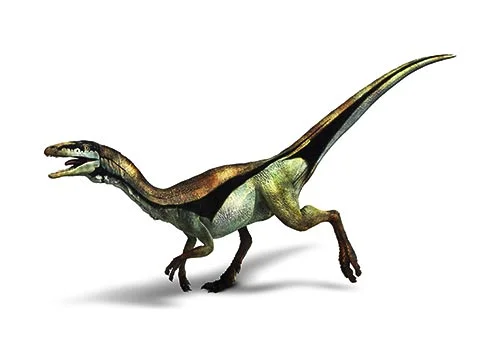Compsognathus (Pretty jaw)

Komp-sog-nath-us
Johann Andreas Wagner - 1861
Carnivore
Estimated 125-650cm long
Small Theropod
C. longipes (type)
Germany, France, Possibly Portugal
Late Jurassic, 150 million years ago
Compsognathus Facts
Compsognathus is a small, two-legged dinosaur that lived during the Late Jurassic period, about 150 million years ago. It was one of the earliest and smallest members of the theropod group, which also includes larger predators like Tyrannosaurus and Velociraptor. Despite its small size, Compsognathus was a skilled hunter and scavenger that likely fed on small animals, such as lizards and insects.
One of the most distinctive features of Compsognathus is its slender, lightweight skeleton. Its long, narrow legs and lightweight body allowed it to move quickly and easily, making it an efficient predator. Additionally, the long, sharp teeth and claws of Compsognathus were well-suited for hunting and killing small prey.
Compsognathus was first discovered in the late 19th century, and its fossils have been found in several locations throughout Europe, including France and Germany. The first complete fossils were discovered in Germany in the early 20th century, and these specimens provided valuable information about the anatomy and biology of this small dinosaur.
Despite its small size, Compsognathus remains a popular dinosaur among scientists and dinosaur enthusiasts alike. Its compact and well-preserved fossils have provided a wealth of information about the early evolution of dinosaurs and the biology of small, agile predators.



